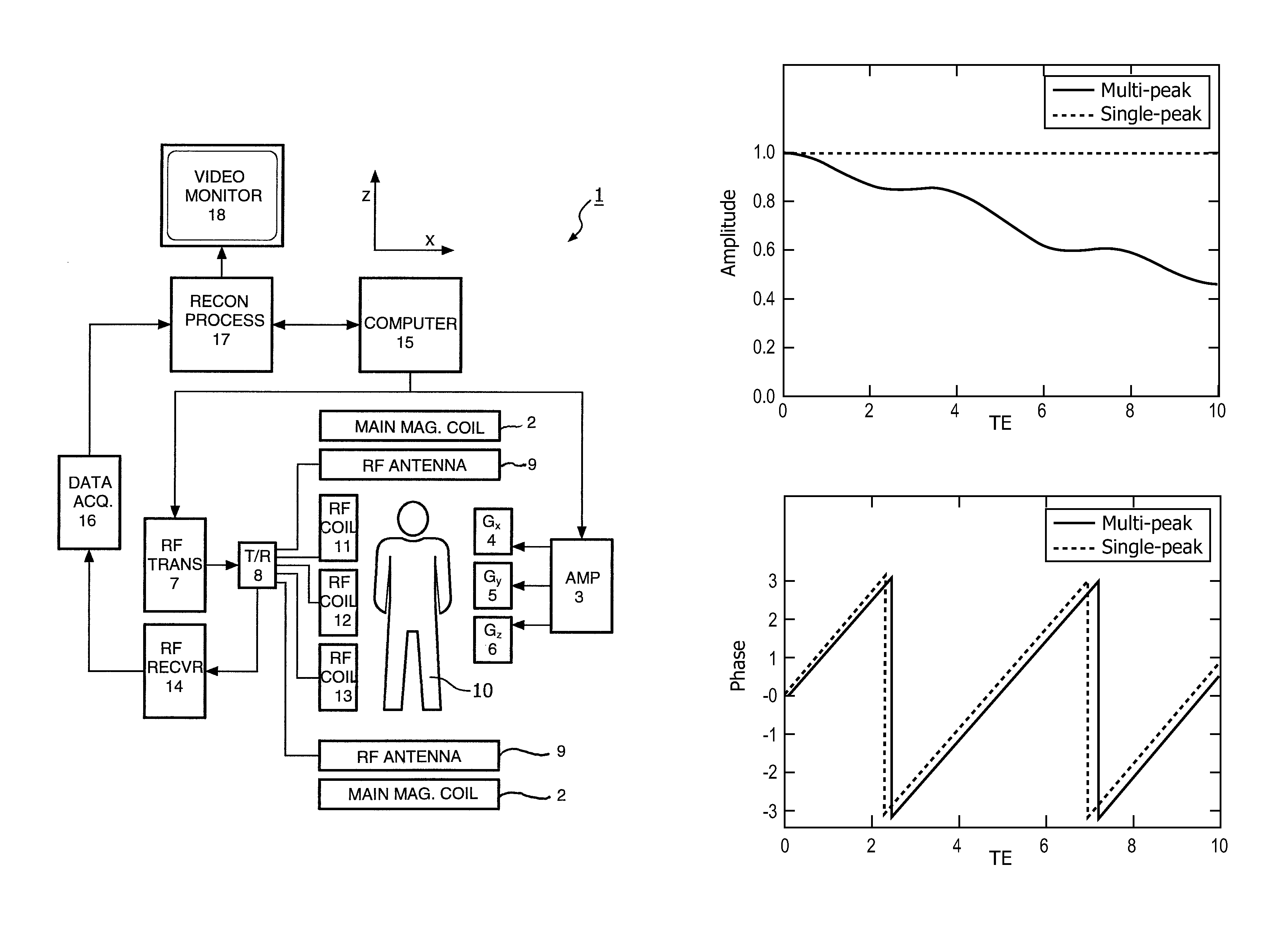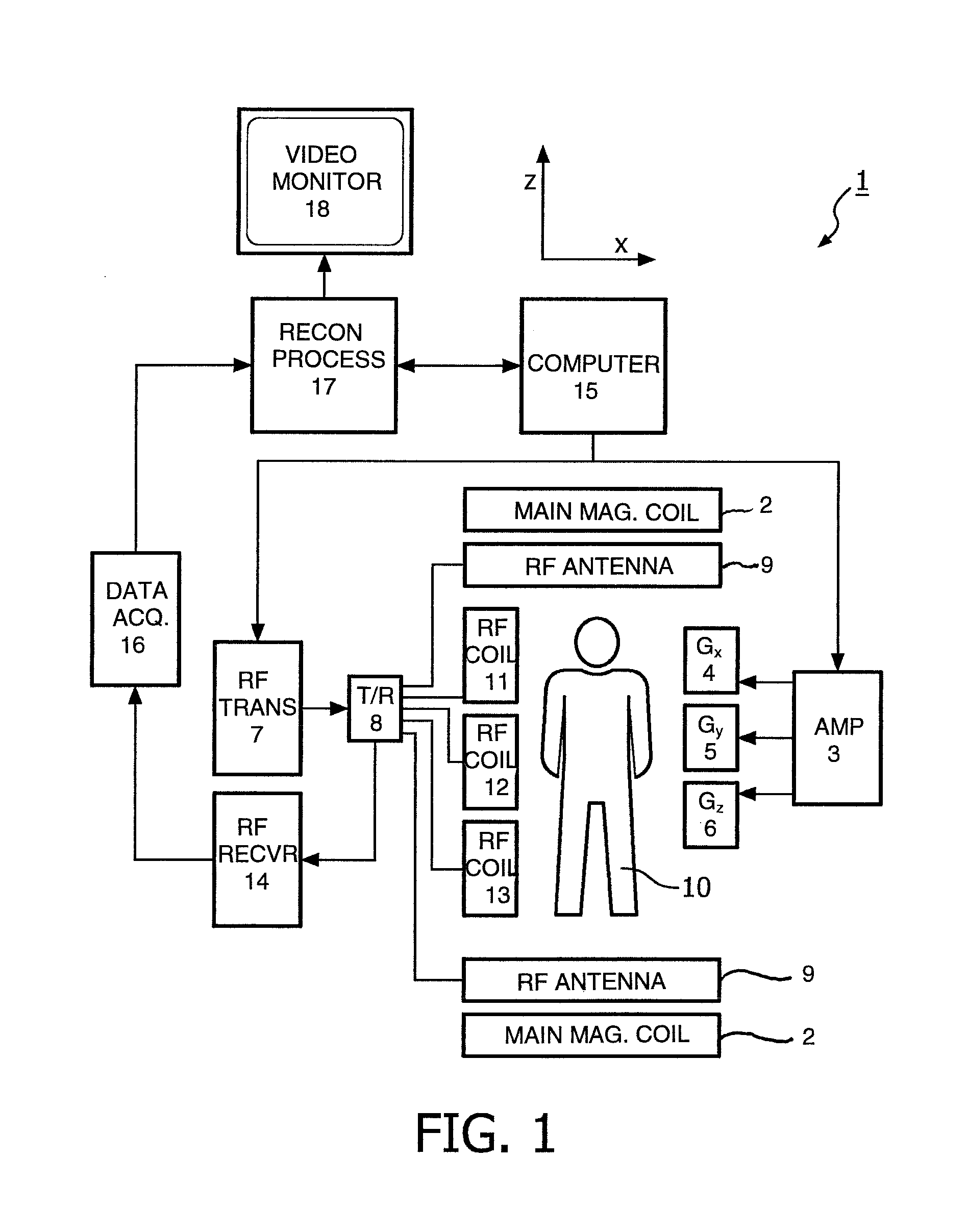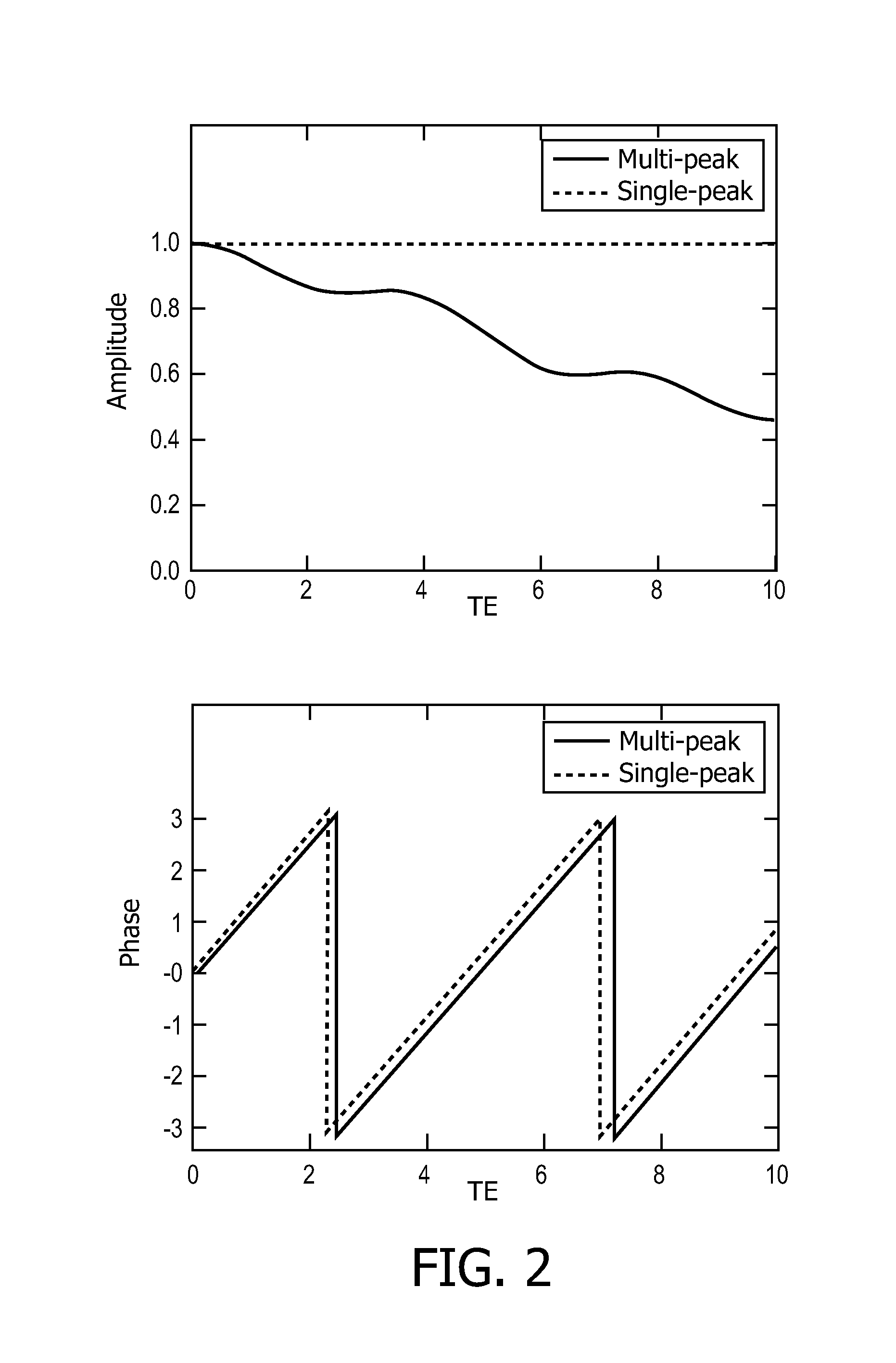Magnetic resonance imaging of chemical species
a magnetic resonance imaging and chemical species technology, applied in the field of magnetic resonance imaging of chemical species, can solve the problems of only robust for a higher number of fats, and fail to provide a more efficient fat suppression
- Summary
- Abstract
- Description
- Claims
- Application Information
AI Technical Summary
Benefits of technology
Problems solved by technology
Method used
Image
Examples
case 1
>1|>|c2| and c1R>c2R
a) r<1: no solution
b) 1≦r≦|c1 / c2|: F−, W− (i.e. a single solution)
c) r>|c1 / c2|: F−, W− and F+, W+ for c1R|c2|2−c2R|c1|2>0 (i.e. two solutions), none otherwise
[0113]Consequently, for case 1 it is desired to operate with the condition c1R|c2|2−c2R|c1|2<0 such that any measurement results in a single unambiguous solution for the water / fat signal separation. Otherwise, a single unambiguous solution is usually still obtained for a water-dominant signal.
case 2
>1|>|c2| and c1R2R
a) r−, W− and F+, W+ (i.e. two solutions)
b) 1≦r≦|c1 / c2|: F+, W+ (i.e. a single solution)
c) r>|c1 / c2|: F−, W− and F+, W+ for c1R|c2|2−c2R|c1|2>0, (i.e. two solutions), none otherwise
[0114]Consequently, for case 2 it is again desired to operate with the condition c1R|c2|2−c2R|c1|2<0 such that a single unambiguous solution is usually obtained for a pure or almost pure fat signal. However, case 2 is generally less desirable than case 1, since only a partial identification is possible.
case 3
>1|2| and c1R>c2R
a) r1 / c2|: F−, W− and F+, W+ for c1R|c2|2−c2R|c1|2<0, (i.e. two solutions), none otherwise
b) |c1 / c2|≦r≦1: F+, W+ (i.e. a single solution)
c) r>1: F−, W− and F+, W+ (i.e. two solutions)
[0115]Consequently, for case 3 it is desired to operate with the condition c1R|c2|2−c2R|c1|2>0 such that a single unambiguous solution is usually obtained for a pure or almost pure fat signal. However, case 3 is generally less desirable than case 4, since only a partial identification is possible.
PUM
 Login to View More
Login to View More Abstract
Description
Claims
Application Information
 Login to View More
Login to View More - R&D
- Intellectual Property
- Life Sciences
- Materials
- Tech Scout
- Unparalleled Data Quality
- Higher Quality Content
- 60% Fewer Hallucinations
Browse by: Latest US Patents, China's latest patents, Technical Efficacy Thesaurus, Application Domain, Technology Topic, Popular Technical Reports.
© 2025 PatSnap. All rights reserved.Legal|Privacy policy|Modern Slavery Act Transparency Statement|Sitemap|About US| Contact US: help@patsnap.com



